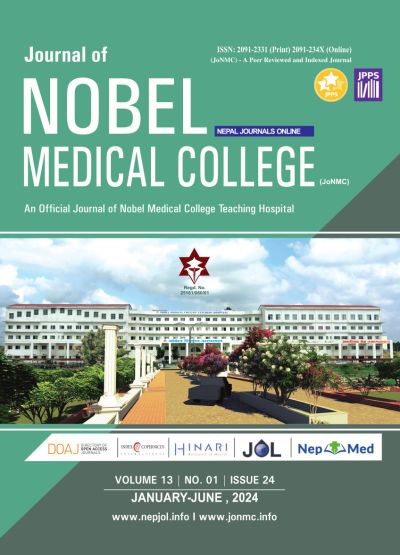Comparison of Workplace Posture on Heart Rate Variability between Exercising and Non-Exercising Traffic Police
DOI:
https://doi.org/10.3126/jonmc.v13i1.68101Keywords:
Exercise, Heart rate, Posture, WorkplaceAbstract
Background: This study aimed to investigate heart rate variability among traffic police officers and compare these parameters between exercising and non-exercising groups. Heart rate variability is an important marker of cardiac autonomic function. Understanding the impact of exercise on heart rate variability among traffic police officers can provide valuable insights into strategies for improving their cardiovascular well-being.
Materials and Methods: This comparative correctional study was conducted among forty-two healthy traffic police officers. The participants were divided into exercising and non-exercising groups based on their physical activity levels. Heart rate variability was measured using standard technique. Data was analysed using Microsoft Excel and SPSS version 16. The heart rate variability values were non parametric. So, data were expressed as median interquartile range and comparison between two groups was done with Mann-Whitney U test. p<0.05 was considered significant.
Results: The results revealed that a higher proportion of traffic police officers were in the exercising group. Heart rate variability analysis showed significantly higher median values of RMSSD (58.42 ms vs. 41.30 ms), NN50 (80.00 vs. 24.00), pNN50% (36.56% vs. 11.820%) and HF power (1079.40 ms² vs. 368.000 ms²) in the exercising group. Additionally, the exercising group exhibited a lower LF/HF ratio (0.61 vs. 1.60). Although not statistically significant, heart rate was less in exercising group (73.61±6.93bpmvs. 72.93± 7.79bpm).
Conclusion: The study suggests that even with prolonged workplace posture, exercise among traffic police can have higher heart rate variability and parasympathetic dominance, a positive indicator for cardiovascular health.
Downloads
Downloads
Published
How to Cite
Issue
Section
License

This work is licensed under a Creative Commons Attribution 4.0 International License.
JoNMC applies the Creative Commons Attribution (CC BY) license to works we publish. Under this license, authors retain ownership of the copyright for their content, but they allow anyone to download, reuse, reprint, modify, distribute and/or copy the content as long as the original authors and source are cited.




